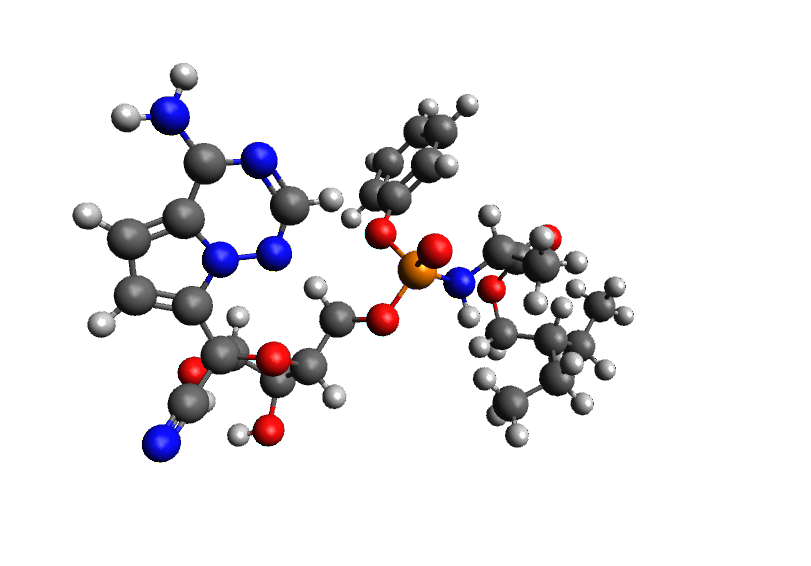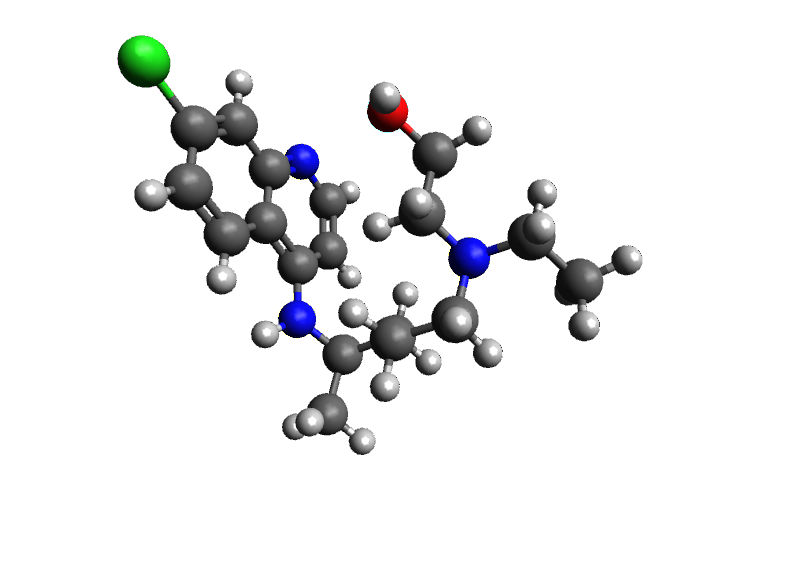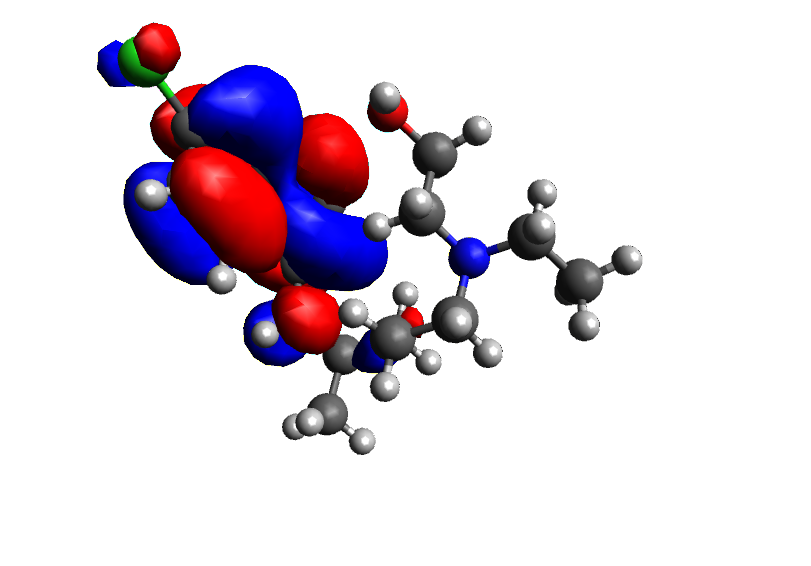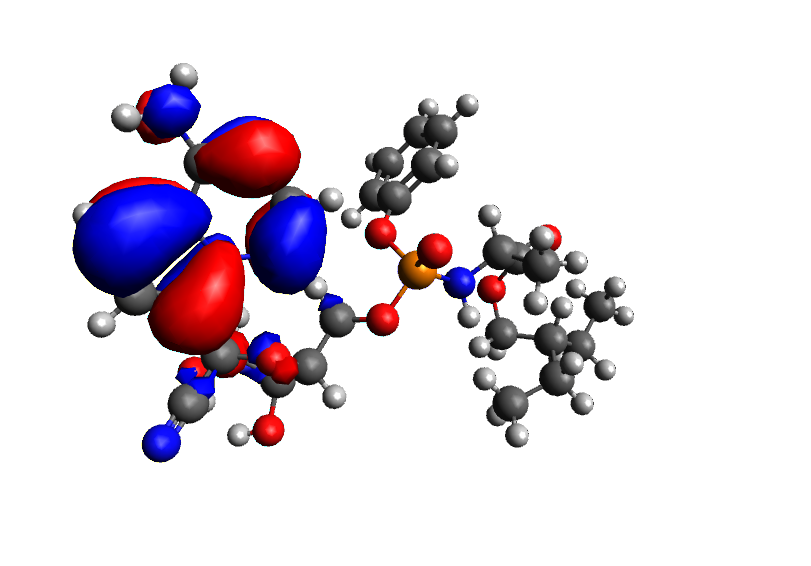



Severe acute respiratory syndrome coronavirus 2 (SARS-CoV-2) emerged as a global pandemic that is severely affecting our daily life, economy, and putting tremendous pressure on the healthcare infrastructure. Undoubtedly, this is one of the greatest challenges faced by humankind after the World War II. Faced with the unprecedented nature of COVID-19, many vaccines, drug molecules have been fast-tracked in Phase I and Phase II trials. Unfortunately, there is still no proper treatment available till date1. However, several existing drug molecules such as ribavirin, interferon, lopinavir-ritonavir, corticosteroids, have been used in patients with SARS or MERS. Although the efficacy of some drugs remain controversial2. Here, we mention two such drug molecules Remdesivir and Hydroxychloroquine that are currently in the news for showing some promising results. As the Nature article commented that “Hopes rise for coronavirus drug Remdesivir”8.
Remdesivir is a nucleoside analog prodrug, developed by Gilead Sciences (USA). A recent case report showed that treatment with Remdesivir improved the clinical condition of the first patient infected by SARS-CoV-2 in the United States, and a phase III clinical trial of Remdesivir against SARS- CoV-2 was launched in Wuhan on February 4, 20203. Already several countries like India, Japan, Taiwan, and the European Union have approved Remdesivir for the treatment of COVID-19.
Hydroxychloroquine has long been used to treat malaria and amebiasis. It has advantages like availability, proven safety record, and a relatively low cost. HCQ has been added to the list of trial drugs in the Guidelines for the Diagnosis and Treatment of COVID-19 (sixth edition) published by the National Health Commission of the People’s Republic of China.
Quantitative structure-activity and structure-property relationship (QSAR/QSPR) studies have great importance in modern chemistry and biochemistry for developing new drug molecules. QSAR models are based on the assumption that the activity of certain molecules is related to their structures with certain mathematical algorithms. Once the correlation between the structure and activity or property is established, any number of compounds can be screened in a computer for the desired function. However, to have a meaningful correlation, one must choose the right sets of descriptors.
Recent progress in the computer hardware, as well as the development of new algorithms, make quantum calculations much easier and faster. As a result, many new “Quantum Mechanical Descriptors’ have been proposed over the years. In Table 1, we give some examples of “Quantum Mechanical Descriptors”.
The very popular quantum chemical descriptors are HOMO (highest occupied molecular orbital) and LUMO (lowest unoccupied molecular orbital) and the energies of HOMO and LUMO play a major role in governing many chemical reactions and determining electronic band gaps in solids. They are also responsible for the formation of many charge- transfer complexes4. According to the frontier molecular orbital theory (FMO) of chemical reactivity, the formation of a transition state is due to an interaction between the frontier orbitals (HOMO and LUMO) of reacting species. Thus, the treatment of the frontier molecular orbitals separately from the other orbitals is based on the general principles governing the nature of chemical reactions.
Here in our study, quantum calculations are performed on Remdesivir and Hydroxychloroquine to extract some quantum chemical descriptors. Quantum calculations are performed using GAMESS software5 and density functional theory was employed. B3LYP exchange-correlation functional and 6-31G6 basis set was used for the quantum calculations. One of the important “Quantum Mechanical Descriptor” is HOMO and LUMO energy. The orbital energies for both the molecules are listed in Table 1. Besides, we have also listed down several other quantum properties of these two molecules. The HOMO-LUMO gap, i.e. the difference in energy between the HOMO and LUMO, is an important stability index. A large HOMO-LUMO gap implies high stability for the molecule in the sense of its lower reactivity in chemical reactions. Based on the stability index results it indicates that these two drugs are efficient for forming a reaction, as the COVID-19 virus consists of multiple proteins which are essential for the viral replication and another mechanism. When a virus is treated with these two drugs it will inhibit and block the mechanisms of viral replication7.
| Sr. no | Quantum Chemical Descriptors | Definition/name | Remdesivir (FAD drug) | Hydroxychloroquine (HCQ - FAD drug) |
| 1 | HOMO (eV) | highest occupied molecular orbitals | -158.450 | -206.281 |
| 2 | LUMO (eV) | lowest unoccupied molecular orbitals | -25.545 | 60.418 |
| 3 | ꞓLUMO - ꞓHOMO | HOMO and LUMO orbital energy difference | 132.905 | 266.699 |
| 4 | η = (ꞓLUMO - ꞓHOMO)/2 | absolute hardness | 66.452 | 133.349 |
| 5 | Qmin, Qmax | net charges of the most negative and most positive atoms | Qmin= -1.056; Qmax= 1.0266 | Qmin= -0.822; Qmax= 0.835 |
| 6 | Qm | mean absolute atomic charge (i.e. the average of the absolute values of the charges on all atoms) | 0.26721 | 0.255929 |
| 7 | µ | molecular dipole moment | 5.7368 D | 6.8537 D |
| 8 | µ2 | square of the molecular dipole moment | 32.9108742 D | 46.973204 D |
| 9 | DX, DY, DZ | components of dipole moment along inertia axes | -0.4166 D, -5.1107 D, -2.5724 D | 5.5167 D, 2.6926 D, -3.0479 D |
Similarly, several other “Quantum Mechanical Descriptors” are listed in the Table.
Another “Quantum Mechanical Descriptor” is a molecular dipole moment (µ). This signifies the retention of the solute phase in a chromatographic plate on a polar stationary phase. In that way, each descriptor is linked with certain physical properties of the molecule.
This is Quantumzyme’s little contribution towards the community, who are interested to know these drug molecules and as a whole the Coronavirus disease.
References
- Falchi, F. & Cavalli, A. COVID-19 Repurposed Therapeutics Targeting the Viral Protease and Spike-protein : ACE2 Interface using MD-based Pharmacophore and Consensus Virtual Screening. (2020). doi:10.26434/chemrxiv.12264503.v1
- Zumla, A., Chan, J. F. W., Azhar, E. I., Hui, D. S. C. & Yuen, K. Y. Coronaviruses-drug discovery and therapeutic options. Nat. Rev. Drug Discov. 15 , 327–347 (2016).
- Liu, J. et al. Hydroxychloroquine , a less toxic derivative of chloroquine , is effective in inhibiting SARS-CoV-2 infection in vitro. Cell Discov. 6–9 (2020). doi:10.1038/s41421-020-0156-0
- Karelson, M., Lobanov, V. S. & Katritzky, A. R. Quantum-chemical descriptors in QSAR/QSPR studies. Chem. Rev. 96 , 1027–1043 (1996).
- Bode, B. M. & Gordon, M. S. MacMolPlt: A graphical user interface for GAMESS. J. Mol. Graph. Model. 16 , 133–138 (1998).
- Schmidt, M. W. et al. General atomic and molecular electronic structure system. J. Comput. Chem. 14 , 1347–1363 (1993).
- To, L. & Editor, T. H. E. Remdesivir and chloroquine effectively inhibit the recently emerged novel coronavirus ( 2019-nCoV ) in vitro. 2019–2021 (2020). doi:10.1038/s41422-020-0282-0
- https://www.nature.com/articles/d41586-020-01295-8